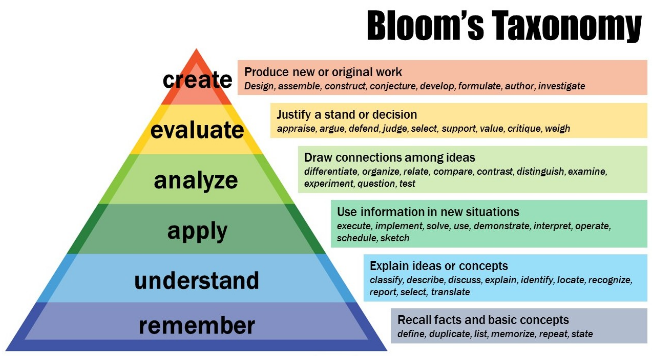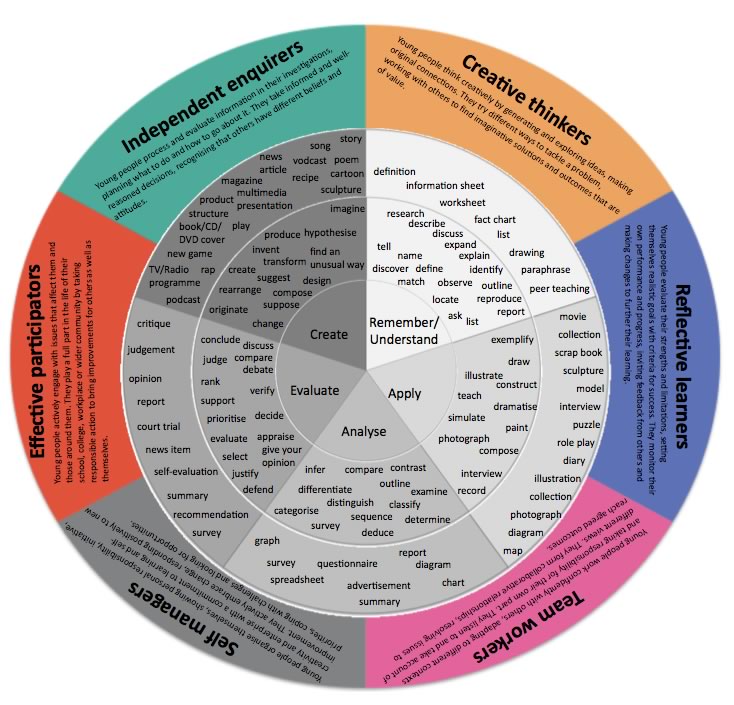When we teach English, we develop not only language skills, but thinking skills as well. But how do we do that in a proper and consistent way? We need to know about LOTS and HOTS.
What are LOTS and HOTS?
It all comes from Bloom’s Taxonomy. It’s created by Dr Benjamin Bloom. There are three modules: cognitive, affective, psychomotor. The cognitive one is applied to the education and learning objectives and activities. This module includes six levels that you can use to structure your lesson or the whole syllabus from the easiest to the most difficult.

Six levels are:
- Knowledge — an ability to remember and recognize facts, information, skills.
- Comprehension — an ability to understand, describe, compare facts, information, skills.
- Application — an ability to use the acquired information, knowledge, facts.
- Analysis — an ability to examine the new information.
- Evaluation — an ability to assess the information, ideas.
- Creation — an ability to generate, design new ideas, concepts.
These levels can be divided into two types of skills: High order skills (HOTs) and Low order skills (LOTs). LOTs are about gathering information and HOTs are about processing it.

https://mayoazamacona.wordpress.com/2014/11/02/blooms-taxonomy/
Let’s imagine you are going to teach Present Simple. How do we apply these skills to teaching English?
- Remembering: students know the rule, they can identify this tense in the sentences. For example, they read a text and highlight the grammatical structure.
- Understanding: students can describe when they use Present Simple.
- Application: students can give examples of Present Simple usage, do a gap-filling exercise or practise the tense in a controlled setting.
- Analyzing: students can examine the form and the uses of the tense, clarify why we use Present Simple in certain contexts, situations, describe the difference between tenses.
- Evaluating: students can change sentences to make them true to themselves; or make sentences in Present Simple using given patterns, examples.
- Creating: students can describe their daily routines or talk about their day.It’s obvious that it’s better to teach with HOTs as your students are more involved in a lesson. When students use HOTs, they do something with the new knowledge, facts: apply it, compare, contrast. HOT involves metacognition: when you think about your thinking.
Moreover, you can apply this taxonomy not only to grammar or vocabulary lessons but, for example, to skills or CLIL lessons too. For example, you teach History through English (e.g., compare old and new things). This is an example of the tasks’ sequence:
- Remembering: pre-teach “old”, “new” and other vocabulary needed for the lesson.
- Understanding: students say what old and new is.
- Application: students choose what things are new and old.
- Analyzing: students compare old and new things.
- Evaluating: students discuss which things are better and why.
- Creating: students design their own old and new things or find old and new things at home and describe them.Sometimes teachers confuse the skills and cannot identify skills their tasks refer to or cannot design activities for each skill. I think this taxonomy wheel is quite useful when you plan your lessons and think of aims.

I also highly recommend you to read these two articles about thinking skills: Teaching critical thinking using Bloom’s Taxonomy and Thinking skills for CLIL.















 Ольга Клементьева
Ольга Клементьева 
 Анна Тетерина
Анна Тетерина 
 Диляра Биктагирова
Диляра Биктагирова 
 Маргарита Аветисян
Маргарита Аветисян 
